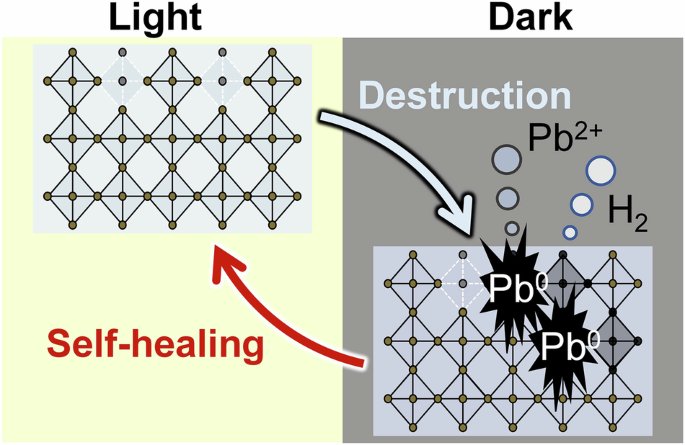Innovative Self-Healing Mechanism for Sustainable Catalysis with Perovskites
Key Ideas
- Researchers have developed a self-healing mechanism for materials inspired by Le Chatelier's principle, eliminating the need for external inputs.
- The study focuses on organic-inorganic perovskites, showcasing their self-healing abilities at a single-particle level for sustainable catalysis.
- Perovskites in a dynamic equilibrium state exhibit self-healing properties, maintaining their function as (photo)catalysts even when damaged.
- The findings present a novel approach towards developing durable and sustainable systems for applications like solar cells and light-emitting devices.
The article discusses a groundbreaking study on a self-healing mechanism for materials, drawing inspiration from Le Chatelier's principle. Traditional self-repairing systems in materials rely on intrinsic or extrinsic mechanisms, requiring external inputs like heat or healing agents. In contrast, the newly proposed self-healing concept operates without external assistance by leveraging dynamic equilibrium.
The focus of the research is on organic-inorganic perovskites, known for their applications in solar cells, LEDs, and lasers due to their optical properties. Despite being unstable under certain conditions, perovskites exhibit stability in saturated aqueous solutions, establishing a dynamic equilibrium between solid and dissolved phases. This equilibrium state enables perovskites to function as photocatalysts for hydrogen generation under visible light, showcasing their potential for sustainable energy applications.
The study conducted single-particle observations using fluorescence microscopy to analyze the self-healing behavior of perovskites at a nanoscopic level. Results indicated that even when damaged, perovskites could self-heal without external inputs, highlighting their resilience and continuous catalytic functionality. This innovative approach introduces a new strategy for developing durable materials that can sustain their performance under adverse conditions.
Overall, the research findings offer insights into creating sustainable systems by harnessing self-healing properties in materials like perovskites. By demonstrating the feasibility of self-healing at a single-particle level, the study opens avenues for enhancing the longevity and efficiency of catalytic materials in various applications.
